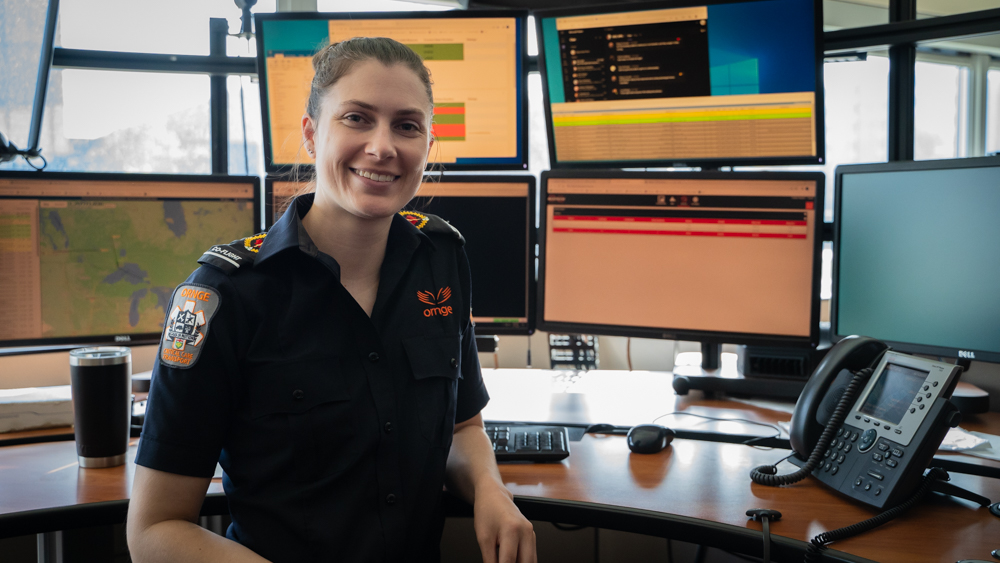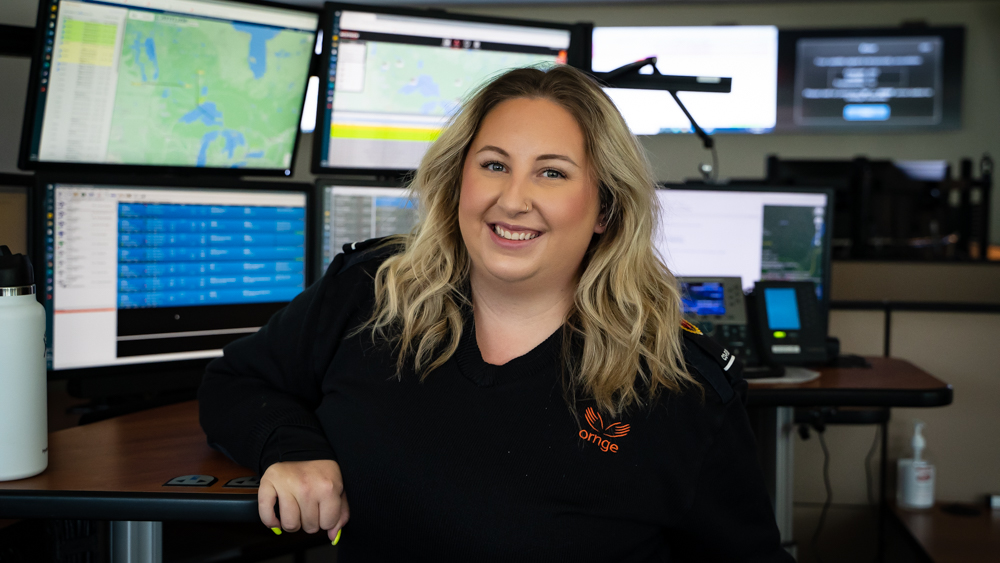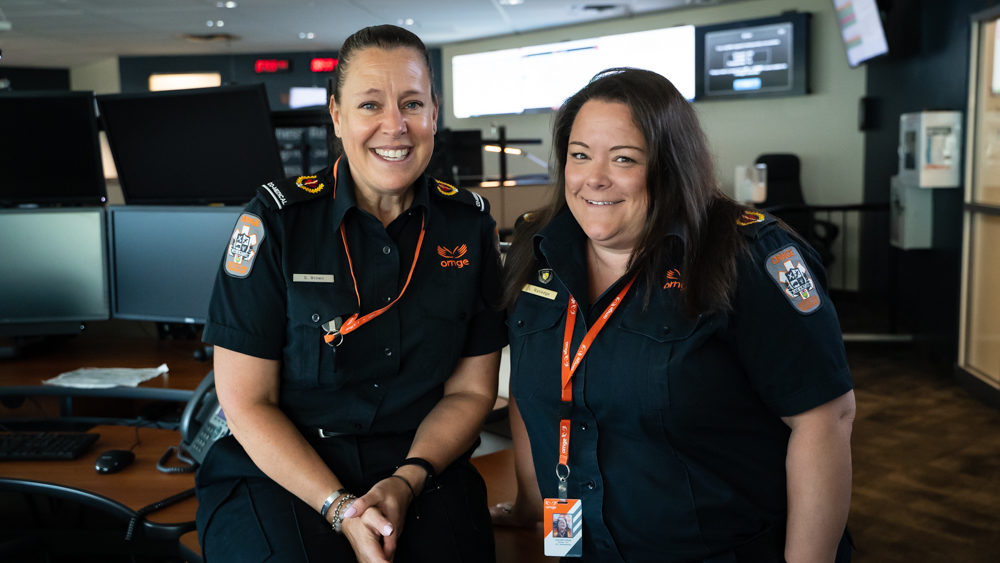A Day in the Operations Control Centre
August 19, 2022
19 August, 2022
|
Mississauga
|
By: Par: Vanessa Lambe
At Ornge, the Operations Control Centre (OCC) is a 24/7 hub where incoming calls and patient transports are coordinated for the entire fleet; this includes Ornge helicopters, fixed wing aircraft, and critical care land ambulances across the province of Ontario.
At Ornge, the Operations Control Centre (OCC) is a 24/7 hub where incoming calls and patient transports are coordinated for the entire fleet; this includes Ornge helicopters, fixed wing aircraft, and critical care land ambulances across the province of Ontario.
The OCC is staffed by a team of Communications Officers who specialize in Flight or Medical, a Transport Medicine Physician, and an Operations Control Manager. When a call comes in, the Medical Communications Officer gathers all of the necessary information, patients are triaged and then the Flight Communications Officer coordinates available transport teams based on system availability.
The Transport Medicine Physician plays an active role in determining mode of transport and crew configuration based on the patient’s condition. The Operations Control Manager oversees patient transfer logistics from start to finish to ensure each transport happens safely, efficiently and effectively.
I recently caught up with the OCC team to learn what a typical day is like for the people behind the scenes of the largest air ambulance and critical care land ambulance fleet in Canada.
Today, there is a flurry of activity: incoming calls, scheduling crews, coordinating with standing agreement carriers – carriers under contract to Ornge who handle many of the primary care transports in the North -- and tracking the movement of flights. Even with this flurry of activity, Shannon Brown, a Medical Communications Officer calls this time of day the ‘calm before the storm’. The digital board next to the Operations Control Manager that displays the status of each Communications Officer is mostly red. Shannon’s colleagues are all on calls, either receiving patient information or coordinating transports. When they finish a call, they have mere seconds to complete any residual documentation before their name appears in green, meaning they are available to receive another call. Shannon’s line rings and as she picks it up, her name turns to red on the status board. The call is from a rural paramedic service. There has been a multi-vehicle collision in Minden, a township in Haliburton County. A patient requires transportation to a facility that can provide a higher level of care then the local facility.
“A huge part of our job involves talking with medical professionals about their patients who need our transport services,” says Shannon. “They may be under a lot of stress or in a busy environment and it’s our job in the OCC to make sure we gather all of the necessary information to ensure our transport team can provide the right care to their patients.”
Shannon lets her colleague Shyla Aube, a Flight Communications Officer, know about the Minden call before transferring them. Shyla works to coordinate the available rotor wing fleet. She speaks with the paramedic service and an available transport team who are able to transport the patient from the crash site in Minden to the rooftop helipad at Sunnybrook Health Sciences Centre in Toronto.
“While the public knows Ornge best for landing our rotor wing aircraft in unconventional places, we do so much more than that,” says Shyla. “It’s important to know that the bulk of our work is inter-facility transfers.” And it’s true – even with the postponement of many non-emergent hospital services due to COVID-19, 93% of the transports in 2021 were inter-facility transfers, down only 1.6% from the previous year.

[Shyla Aube, Flight Communications Officer]
A few desks away, Tobi Taraborrelli is coordinating scheduled transports for the fixed wing fleet. “A lot of the work done by our fixed wing aircraft includes transporting patients to receive much needed tests. The volume of non-urgent transports is so high right now due to the healthcare system catching up with patients after the worst of the pandemic,” says Tobi. “I really appreciate the work we do here. We connect patients to the care they need, regardless of where they live.”

[Tobi Taraborelli, Flight Communications Officer]
Lisa Ratledge, the Operations Control Manager overseeing the OCC today, says that despite dealing with trauma in their line of work that it’s important to remember the impact they make in people’s lives, “Even though we deal with really tough calls that stick with me the most, there are positive outcomes too. With so many moving pieces, there have been situations when our whole team has come together to make sure that we provide patients with the best possible care in the most efficient way.”

[Shannon Brown, Medical Communications Officer and Lisa Ratledge, Operations Manager]
The patient from Minden has been successfully transported to Sunnybrook Health Sciences Centre and our transport team takes flight back to their home base to await their next call.